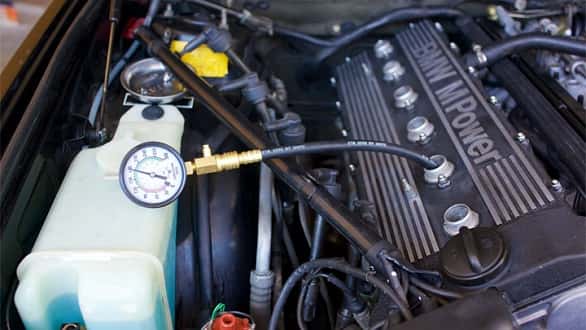Compression test helps you understand the condition of engine valves, piston rings, gaskets, and valve seats. These parts move continuously, and hence they can go through a lot of wear & tear. The manufacture tells you what should be the minimum compression of the cylinders in your engine, and it varies as per the model, engine, and fuel type. The compression test will help you judge the engine’s condition, and it will also help you understand the reason behind the lack of power.
Know why Your Car Engine Need a Compression Test
For the compression test, you would need a compression gauge. You would need other sophisticated instruments for the diesel engine, which are usually available with professional mechanics.
If your car engine is running fine and generating the expected power, you would not need a compression test. However, if the car engine is running rough or experiencing a loss of power, you must go ahead and get the car tested for compression. As per some of the manufacturers, the engine should be tested for compression after every tuning activity.
Talking about when is the compression test needed. It is required when you notice one of the issues listed below.
- Smoke blowing out from exhaust on acceleration or deceleration.
- Lack of power or sluggish acceleration.
- Unusual engine noise or vibrations.
- Lower than expected fuel economy.
- You are overfilling the engine with oil.
- The car’s engine is overheating even with proper coolant and fluid levels.
The compression test would help the mechanic in figuring out issues with the engine. Some of the problems that can be detected with the help of compression tester tool are listed below.
- Engine Malfunction
- Bad Valves
- Carbon Build-up
- Gasket Burns or Tear
- Worn Out Piston Rings
The advantage of detecting these problems early is that it saves you from a considerable expense. The issues listed above can cause irreparable damage to the engine if they are not rectified. Figuring out these issues earlier means fixing the problem and preventing the engine from ceasing. Doing the compression test will also give you an idea about the expense you will incur in repairing the car. If the cost exceeds the benefit, you can decide to sell the vehicle.
You can even perform an engine compression test at home, and below are the steps to complete the test.
- Start by warming the engine to the required temperature. Once the engine is warm, all the components would expand to their optimal level, and it will create the best compression inside the engine’s cylinder.
- Switch off the engine and remove the fuel pump relay switch. You must also disconnect the connections to the coil pack. This will help you in ensuring that the engine would not start during the test.
- In the next step, you would need to disconnect all the spark plug wires from the wire. You would also need to remove the spark plugs from the cylinders.
- Now install the engine compression gauge in the first spark plug hole and crank the engine over about 5 seconds. This will help you get the compression reading, and you can record it on a piece of paper. Do a similar task with all the cylinders and take down the readings.
- If the reading between the cylinders has a variance of less than 10%, then your engine is fine. You also need to match the compression values with the ones provided by the manufacturer.
- If there is considerable variance in any cylinder or a low compression / high compression in all the cylinders, you would need to consult a mechanic.
The compression test will help you understand if the issues you face are related to the engine problem. If the compression is fine, you can be sure that the symptoms are not associated with the engine, and you should probably look into other underlying causes. If there is a difference between the actual and the expected compression, you must reach out to the workshop and estimate repair. Based on that, you can decide to replace the engine, sell the car, or repair the engine.
